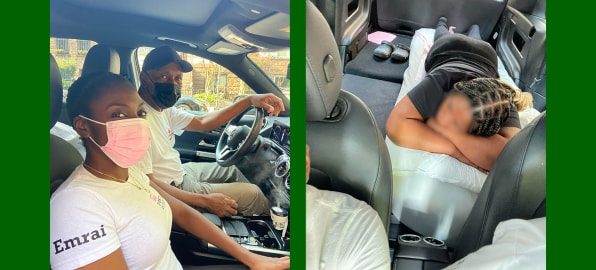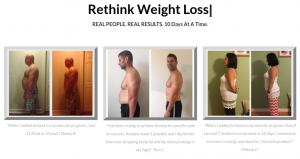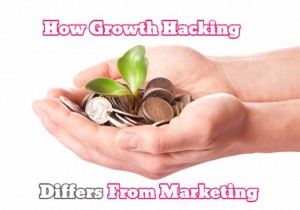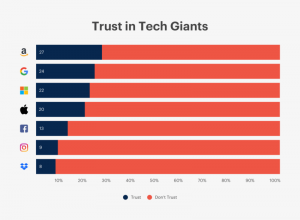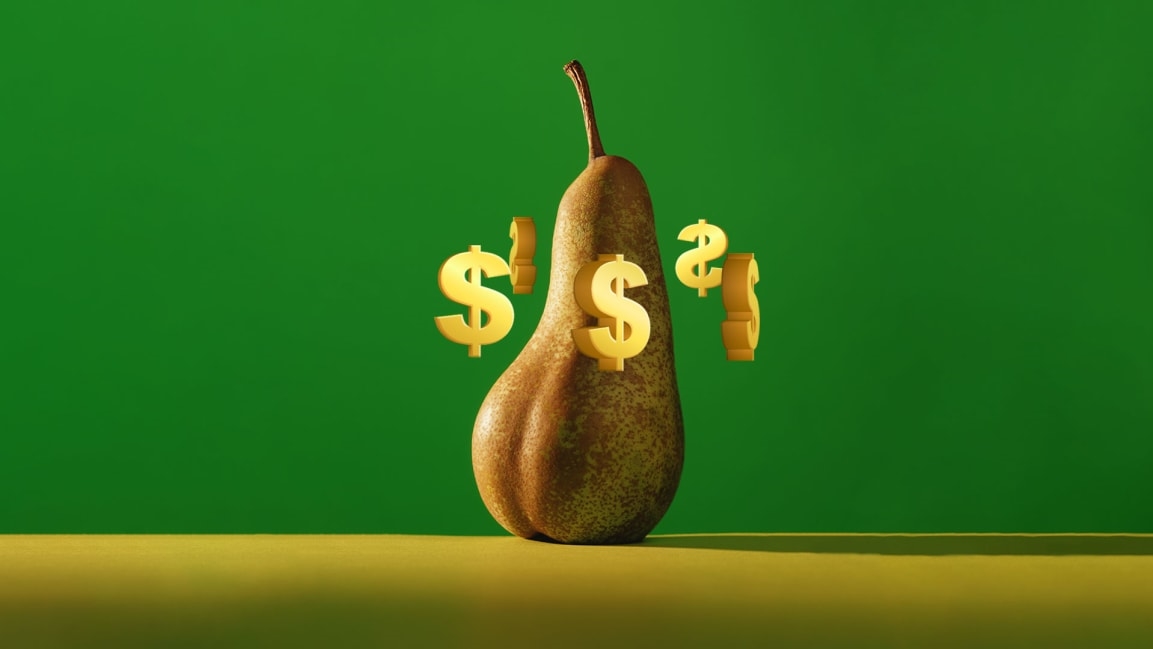
Rose Menos, owner of the Brooklyn-based transportation service Post Op Rides NYC, has been swarmed with calls and texts from potential clients since opening for business last June.
While a select few reach out to her for standard ambulatory services, a good majority of her clients are coming out of one the fastest-rising plastic surgeries: the Brazilian Butt Lift (BBL).
“I’m very familiar with plastic surgery, as I’ve had two BBLs myself down in Florida,” Menos says. “After returning to New York, getting acquainted with the surgery community here, I felt like there was a need for some kind of transport, especially in a city where not everyone has a car. It felt like the perfect opportunity to fill a void.”
BBLs involve the transfer of fat from areas of your body (the thighs, stomach, and sometimes the back), to your buttocks and hips to create the desired hourglass figure. The dangers of the complex procedure have been well documented, the main issue being that fat can inadvertently enter the gluteal veins and travel up to the heart and lungs. The mortality rate for BBLs has been estimated to be as high as 1:3,000, making it one of the most dangerous cosmetic surgeries on the market.
But that clearly hasn’t stopped the BBL phenomenon.
Brazilian plastic surgeon Ivo Pitanguy pioneered the BBL in the 1960s, and it began gaining steam in the United States in 2010s with the rise of influencers and celebrities such as Kim Kardashian flaunting figures many assumed could only be attained through surgery.
But BBLs found new fame over the course of the pandemic: According to the American Society for Aesthetic Plastic Surgery, 40,230 butt augmentations were performed in 2020. No doubt, the BBL craze has been turbocharged with social media tapping into the hype. On TikTok, #BBLeffect has more than 212 million views fueled by Miss BBL, a character created by Antoni Bumba who eats, walks, and leaves Ubers the way any BBL baddie would: in a melodramatic flair.
Memes of BBL Drake and BBL Grinch also popped up last year alongside a Twitter video that went viral, showing more than 20 women at Santo Domingo Airport who purportedly received BBL surgeries in the Dominican Republic. A similar video blew up on TikTok of several women on a flight unable to sit down properly due to the risk of disrupting the surgery.
@antonibumba it’s a state of mind.
The BBL phenomenon doesn’t seem to be flattening anytime soon. And businesses like Menos’s Post-Op rides are aiming to meet the demand. But one has to wonder: Are these businesses capitalizing on a dangerous trend?
The Uber of BBLs
Post Op Rides, referred to as the BBL Uber, went into business this past June during the BBL boom. Since the transportation service is in its infancy, Menos does it part-time and has made it a family affair with help from her father, Frantz Menos, a former New York City taxi driver; her sister, Emrai Menos, a nursing student; and Menos’s boyfriend. Between the three of them, they rotate shifts to meet the needs of their local clients, as well as those who come to New York from Connecticut, New Jersey, Chicago, Boston, and even as far as Idaho, “simply because they don’t want to risk going out of the country,” Menos says.
But Post Op Rides doesn’t restrict service to those who are coming out of plastic surgery. The company caters to anyone who’s had a medical procedure, including endoscopies and gender confirmation surgeries.
“A lot of clients don’t like the ambulette service,” Menos says. “They’re looking for a different, more discrete experience. So they call us.”
Ambulette services are the more traditional form of medical transportation for those unable to use taxis. According to Ecolane, a provider of web-based transit scheduling software, lower-end ambulette services are estimated to be around $25-$30—but they can vary widely based on the day of the week, holidays, distance, and services needed, with rates going as high as $250. At Post Op, the base price starts at $75 and goes up depending on the distance and whether the client requires one-way or a round trip.
However, what Menos believes really sets Post Op Rides apart from traditional services is its commitment to patient care, from drop off to follow-ups post-surgery.
Post Op Rides’s Instagram and TikTok posts show clients on their hands and knees crawling into the back of their SVU to lay face down on a cot. (Patients can’t sit for a couple of weeks following surgery.) They’re offered water, tissues, and an essential oil humidifier to help with nausea.
“We really do care about the safety of our clients. I always check in on my clients the following day. Waiting a couple days after their trip isn’t okay,” Menos says. “If they need recommendations like a massage therapist or like a nurse that will make house calls, I’m more than willing to give them those resources to help facilitate that for them. We’re more than just transportation.”
The comments on Post Op Rides’s social media vary from “this is needed” to “this is a liability,” but Menos states that Post Op Rides has endured all the necessary hurdles to confirm their legitimacy, such as being licensed and insured within New York State. They’ve taken the proper precautions and have clients sign a waiver before booking.
“I go around and schedule meetings with different plastic surgeons offices and their coordinators, as well as medical spas that do post-op care for our clients,” Menos says. “We get referrals from a bit of everywhere.”
While the plastic surgery boom hasn’t surged in New York City to the same extent as in Miami or the Dominican Republic, Menos sees the BBL phenomenon as an opportunity for growth and expansion.
“I know for us, we’re hoping to establish an Airbnb that is available to people who are having surgery and then couple that with our transportation services,” she says. “There are people in New York who are selling recovery kits, they have all the supplies you would need to get through your recovery. There’s massage therapists that work out of spas and salons and they have been helpful when looking for clients.”
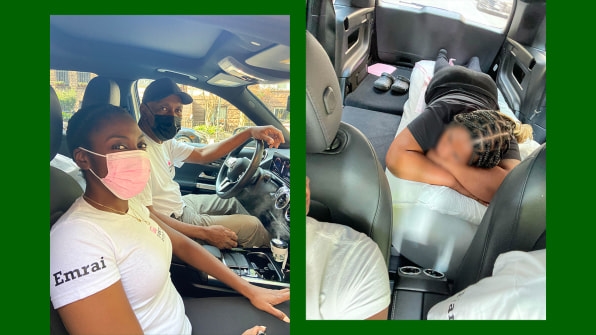
The house that BBLs built
The aftercare of a BBL can be a messy process—draining fluids, changing bandages, etc.—all of which is made more complicated by how immobilized patients are post-op.
It’s why recovery houses such as Cocoon Recovery Home in Tijuana, Mexico, have become a staple for those both traveling out of their state or country for surgery and or who just need a level of care they can’t give themselves at home.
“If you don’t have someone you trust to care for you after your procedure, then my recommendation would be to either stay at the doctor’s clinic or hospital, or a recovery house and hiring a private nurse,” says Cocoon’s founder, who asked not to be named. “But honestly the best choice—because I run it—is to stay in a recovery house to ensure a safe and healthy after care.”
The women-only facility provide clients with services that are unique to Cocoon. Similar to other recovery houses, homemade meals and lymphatic massages are provided. But what sets Cocoon apart from its competitors is that it offers transportation to and from the border, and around-the-clock care from a team of certified nurses.
The aftercare of any surgery isn’t unique to BBLs. Doctors are required to check in on patients after any procedure to ensure they’re healing properly. However, J. Peter Rubin, MD, endowed professor and chair of plastic surgery at the University of Pittsburgh Medical Center, notes that some women never hear back from their doctors, especially if they travel out of the country.
“What happens when someone is traveling for surgery and they have an obligation and they’re back home 1,500 miles away? That’s actually a big issue,” says Rubin who’s also co-chair of the Gluteal Fat Grafting Task Force. “In our department at the University of Pittsburgh, we see that a lot—patients who travel to other states and come back with complications or needing aftercare. Not only have we not been contacted by the treating physician, but in most cases they are unavailable. We can’t even reach them.”
Cocoon’s founder knows clients are putting their money—and health—into the center’s hands. The business has its necessary permits, which were reviewed by Fast Company, and creates emergency plans for patients, being certified through the city’s health department. There’s a doctor on staff who’s in charge of the facility.
“Post-op care is so important,” the founder said. “I think that anyone who is planning to travel for their surgery should do their research ahead of time.”
The boom (or bust) of the BBL economy
The plastic surgery industry is riddled with controversy and high mortality rates. But despite warnings from surgeons and patients who have gone under the knife, the BBL has created its own economy, which has permeated throughout social media, film, and television, and the fashion industry. There is no denying businesses such as Cocoon and Post Op Rides are seizing on an opportunity that is rife with potential.
Ensuring that they’re running a legit businesses is essential to cushioning the blow of legal ramifications, but to also for cementing their place in the post-op economy. The popularity of BBLs could trend downwards in a few years, but plastic surgery is not likely to go anywhere anytime soon. Shiny startups and businesses aren’t just promising to revolutionize the BBL economy, but how customers engage with post-op care across the sector.
“I haven’t interacted much personally with those kinds of businesses, but if they’re providing a service that is within their scope of expertise and are consistent with appropriate training and licensure, then that’s great,” Rubin says. “But the key questions and concerns really have to be about the safety of the surgery itself.”
(90)
Report Post